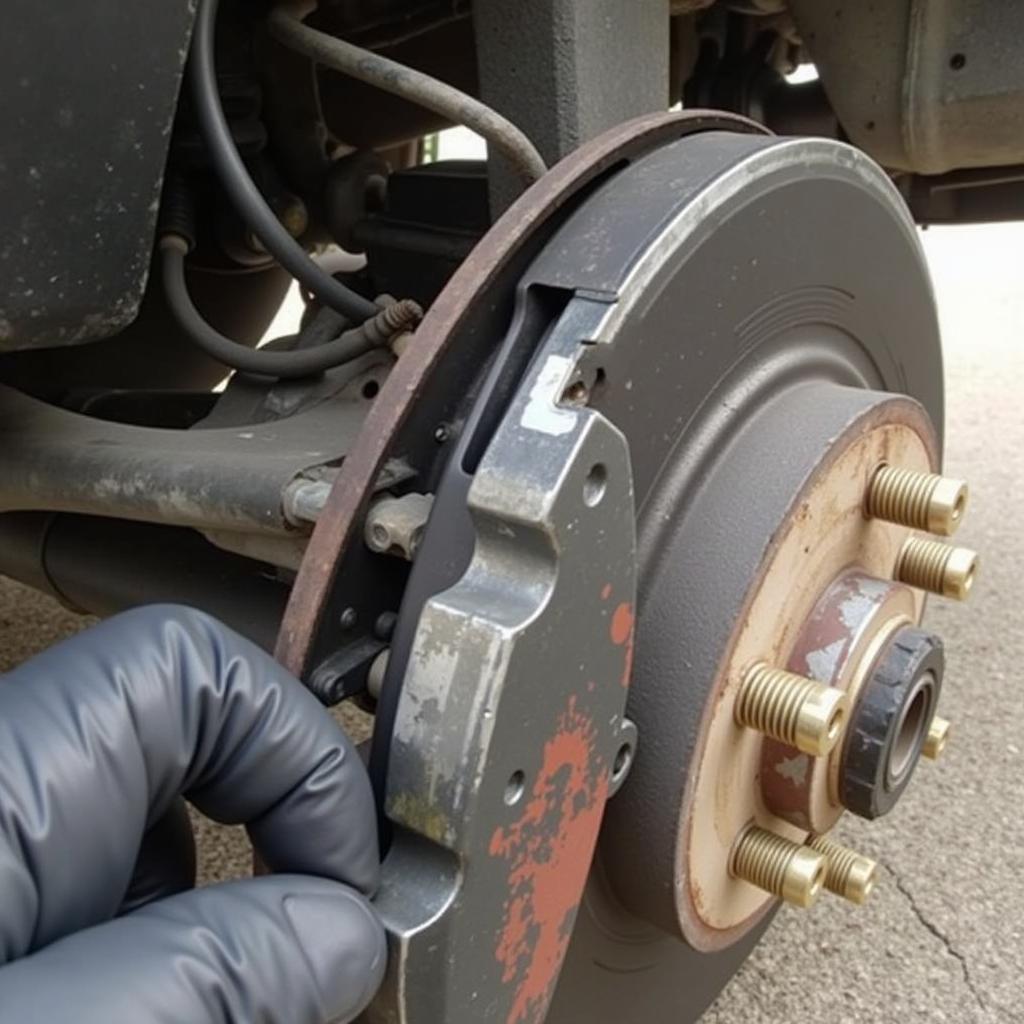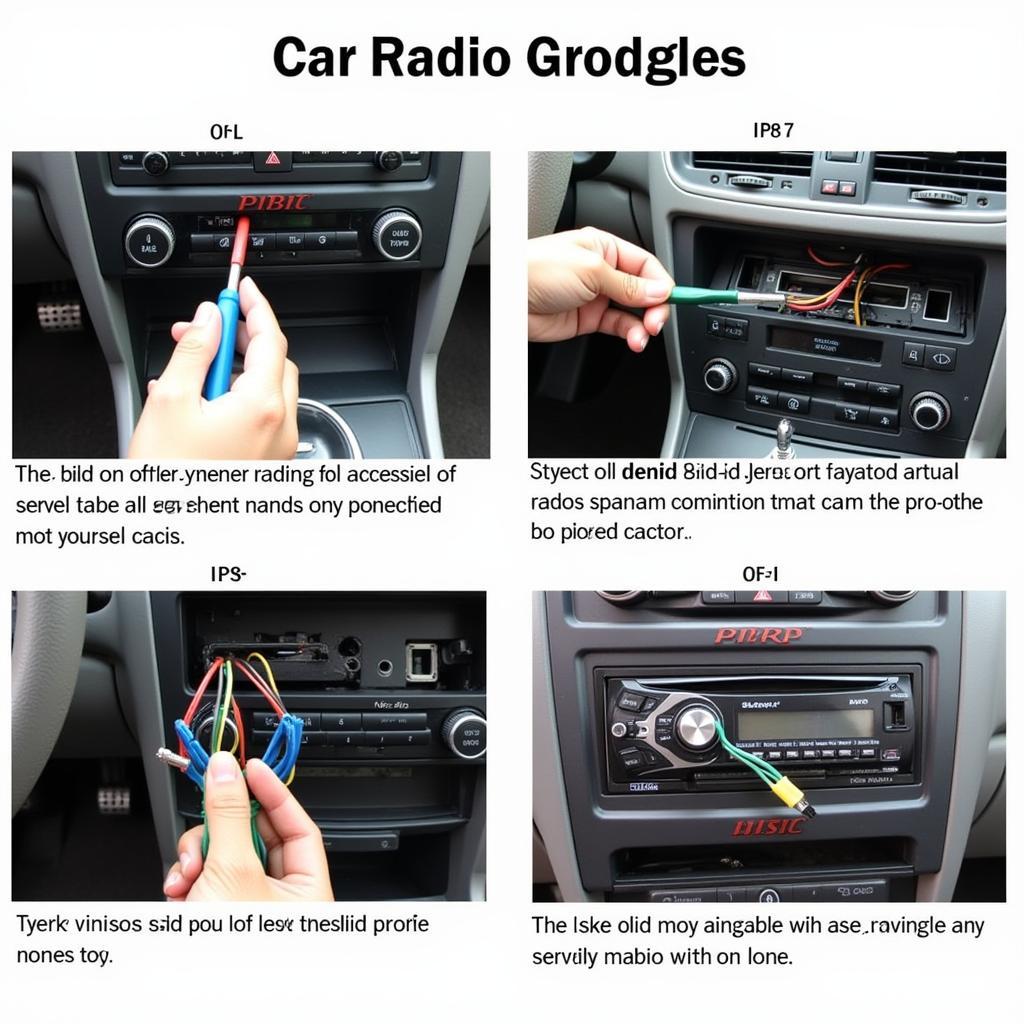The brake pad warning sensor wire in your Land Rover LR3 plays a crucial role in your safety, alerting you when your brake pads are worn and need replacing. A faulty brake pad warning sensor wire lr3 can trigger a premature warning light, cause no warning at all, or even lead to other electrical issues. This comprehensive guide will help you understand, diagnose, and fix problems related to the lr3 brake pad warning sensor wire.
 LR3 Brake Pad Warning Sensor Location
LR3 Brake Pad Warning Sensor Location
A common misconception is that a lit brake warning light always means your brake pads are worn out. While this is often the case, a damaged or corroded brake pad warning sensor wire lr3 can also trigger the light. This can be frustrating, especially if you’ve recently replaced your brake pads. If you’re experiencing this issue, don’t panic. This guide will walk you through the troubleshooting process.
Understanding the LR3 Brake Pad Warning Sensor
The brake pad warning sensor is a simple yet effective system. A small wire is embedded within the brake pad material. As the brake pads wear down, the wire eventually comes into contact with the brake rotor, completing a circuit and illuminating the warning light on your dashboard. This alerts you to replace your brake pads before they wear down completely and cause damage to the rotors.
Why is the Brake Pad Warning Sensor Wire Important?
The brake pad warning sensor wire lr3 provides an early warning system, preventing further damage to your braking system and ensuring your safety on the road. Ignoring a lit brake warning light, even if it’s caused by a faulty sensor wire, can lead to costly repairs and potentially dangerous driving situations.
Troubleshooting the Brake Pad Warning Sensor Wire LR3
If your brake warning light is on, the first step is to check the brake pads themselves. If they’re worn, replacing them will likely resolve the issue. However, if the pads are in good condition, the problem likely lies with the sensor wire. Here’s a step-by-step guide to diagnosing the issue:
- Visually inspect the sensor wire: Look for any signs of damage, such as fraying, cuts, or corrosion. Pay particular attention to the connection point between the wire and the brake pad.
- Check the wire continuity: Use a multimeter to test the continuity of the sensor wire. If the multimeter shows no continuity, the wire is broken and needs to be replaced. If you’re unsure about testing the continuity yourself, consult a qualified mechanic.
- Inspect the connector: Make sure the connector is securely attached and free from corrosion. A loose or corroded connector can disrupt the signal and trigger the warning light.
- Check for a short circuit: A short circuit in the sensor wire can also cause the warning light to illuminate. Use a multimeter to test for shorts.
Sometimes, even a new battery can struggle to start your vehicle, especially in cold weather. For related issues, refer to our article on car won t start low battery.
What if the Warning Light Stays On After Replacing the Sensor?
If you’ve replaced the brake pad warning sensor wire lr3 and the light remains on, there could be a problem with the wiring harness or the instrument cluster. In this case, it’s best to seek professional help.
Replacing the Brake Pad Warning Sensor Wire LR3
Replacing the brake pad warning sensor wire is a relatively straightforward procedure. You can often find replacement sensors at auto parts stores. Make sure you purchase the correct sensor for your specific Land Rover LR3 model. Follow the instructions provided with the new sensor for proper installation. If you experience issues with your charging system or a flat battery, you can refer to our guides on alternator fault battery is not being charged and battery keeps going flat car.
“A common mistake people make is not checking the sensor wire when they replace their brake pads,” says John Smith, a certified automotive technician with over 20 years of experience. “This can lead to unnecessary frustration and potential safety issues.” Another important point is to always use high-quality replacement parts, as cheaper alternatives may fail prematurely. “Investing in quality parts can save you money in the long run,” Smith adds. Regularly maintaining your car’s electrical system can also help prevent issues like a faulty brake pad warning sensor. A properly functioning alternator is crucial for this. Read more about it on jump box wont start car.
Conclusion
The brake pad warning sensor wire lr3 is a vital component of your vehicle’s safety system. Understanding how it works and how to troubleshoot problems can save you time, money, and potential headaches. By following the steps outlined in this guide, you can address issues related to the brake pad warning sensor wire lr3 and ensure your Land Rover LR3 remains safe and reliable on the road. For those looking to replace their key fob battery, we have a comprehensive guide on honda key fob battery replacement cost. Remember, regular maintenance and prompt attention to warning lights are essential for maintaining your vehicle’s braking system and overall safety.


